
A 40 kg slb rest on a frictionless floor as shown in the figure. A 10 kg block rests on the top of the slab. The static corfficient of friction between the block and slab is 0.60 while the kinetic friction is 0.40 the 10 kg block is acted upon by a horizontal force 100N. If g=9.8ms2, the resulting acceleration of the slab will be.
1ms2
1.5ms2
2ms2
6ms2
The correct Answer is:A
Limiting friction between block and slab=μSmSg
=0.6×10×10=60N
But applied force on block A in 100 N, so the block will slip over a slab.
Now kinetic friction works between block and slab fk=μkmAg
=0.4×10×10=40N
This kinetic friction helphs to move the slab
Acceleration of slab =40mB=4040=1ms2
Similar Questions
A 40 kg slab rests on a frictionless floor. A 10 kg block rests on top of the slab. The coefficient of friction between the block and the slab is 0.40. The 10 kg block is acted upon by a horizontal force of 100 N. If g=10m/s2, the resulting acceleration of the slab will be

View SolutionA 42 kg slab rests on a frictionless floor A 9.7 kg block rests on the top of the slab as shown in the figure. The co-efficient of static friction between the block and the slab is 0.53, while the co-efficient of kinetic friction is 0.38. The 9.7 kg block is acted upon by a horizontal force of 110 N. What are the resulting accelerations of
(a) the block, and (b) the slab? (Take g=9.8m/s2)
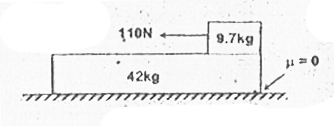
View Solution
Knowledge Check
A 40 kg slab rests on a frictionless floor as shown in the figure. A 10 kg block rests on the top of the slab. The static coefficient of friction between the block and slab is 0.60 while the kinetic friction is 0.40. The 10 kg block is acted upon by a horizontal force 100 N. If g=9.8ms2, the resulting acceleration of the slab will be
 A1m/s2B1.5m/s2C2m/s2D6m/s2
A1m/s2B1.5m/s2C2m/s2D6m/s2A 40kg slab rests on a frictionless floor as shown in the figure. A 10kg block rests on the top of the slab. The static coefficient of friction between the block and slab is 0.60 while the kinetic friction is 0.04 . The 10kg block is acted upon by a horizontal force 100N. if g=9.8m/s2 , the resulting acceleration of the slab will be.
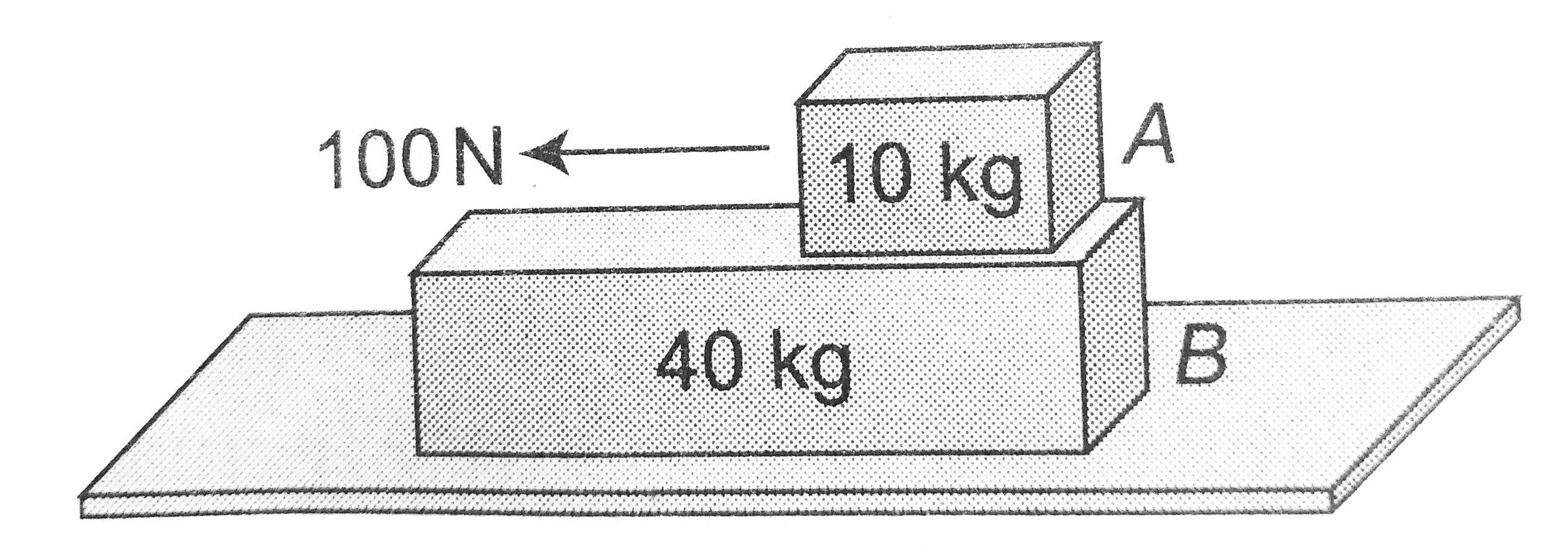 A1m/s2B1.5m/s2C2m/s2D6m/s2
A1m/s2B1.5m/s2C2m/s2D6m/s2A 40 kg slab rests on a frictionless floor . A 10 kg block rests on top of the slab (Fig . 7. 121). The static coefficient of friction between the block and the slab is 0.60 while the kinetic coefficient is 0.40 . The 10 kg block is acted upon by a horizontal force of 100 N . if g = 9.8m/s2 the resulting acceleration of the slab will be :
 A0.98m/s2B1.47m/s2C1.52m/s2D6.1m/s2
A0.98m/s2B1.47m/s2C1.52m/s2D6.1m/s2
A 40 kg slab rests on a frictionless floor . A 10 kg block rests on the top of the slab . [Fig. 7.81 (a)] . The coefficients of static and dynamic friction are 0.60 and 0.40 respectively . The 10 kg block is pulled by a horizontal force of 100 N . what are the resulting accelerations of (a) the block (b) the slab ? ( g = 10m/s2)

View SolutionA force of 200N is applied as shown in the figure on block of 3 kg. The coefficient of friction between the block and the wall is 0.3. Find the friction acting on the block. (in N) {Take g = 10 m/s2
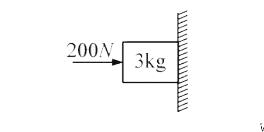
View SolutionBlock A of mass 5 kg is resting on a frictionless floor. Another block B of mass 7kg is resting on it as shown in the figure. The coefficient of friction between the blocks is 0.5 while kinetic friction is 0.4. If a force of 100 N is applied to block B, the acceleration of the block A will be (g=10ms−2) :
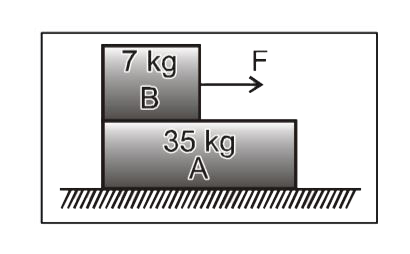
View SolutionIn the arrangement shown in figure coefficient of friction between 5kg block and incline plane is μ=0.5. Friction force acting on the 5kg block is

View SolutionConsider the shown arrangement. The coefficient of friction between the two blocks is 0.5 . There is no friction between the 4 kg block and of 12 N is applied on the 2 kg block as shown in the figure, the acceleration of the 4 kg block would be
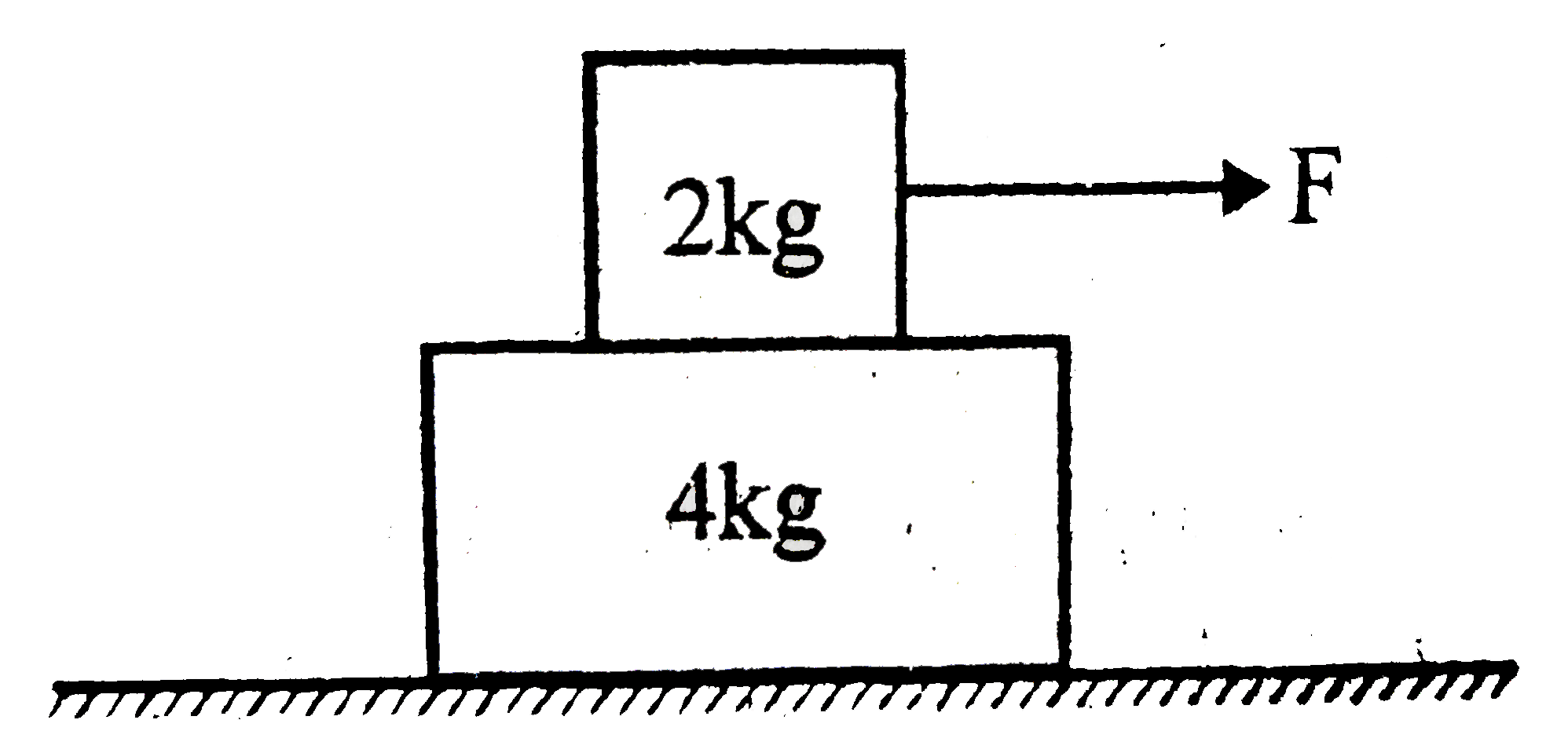
View Solution
